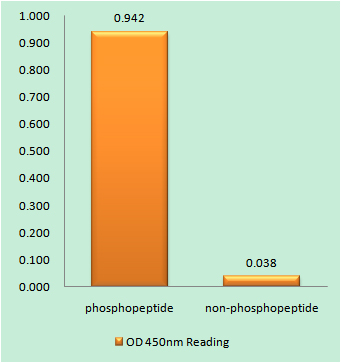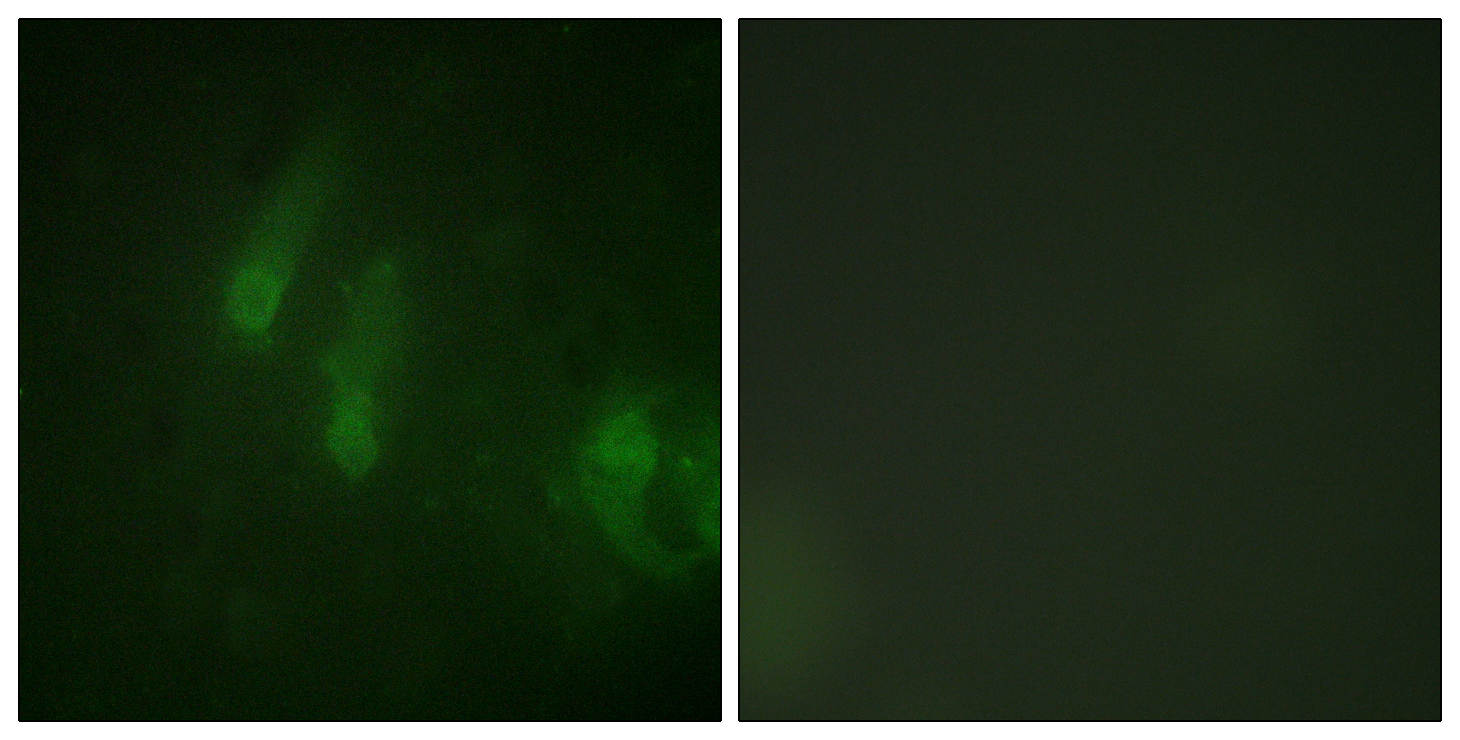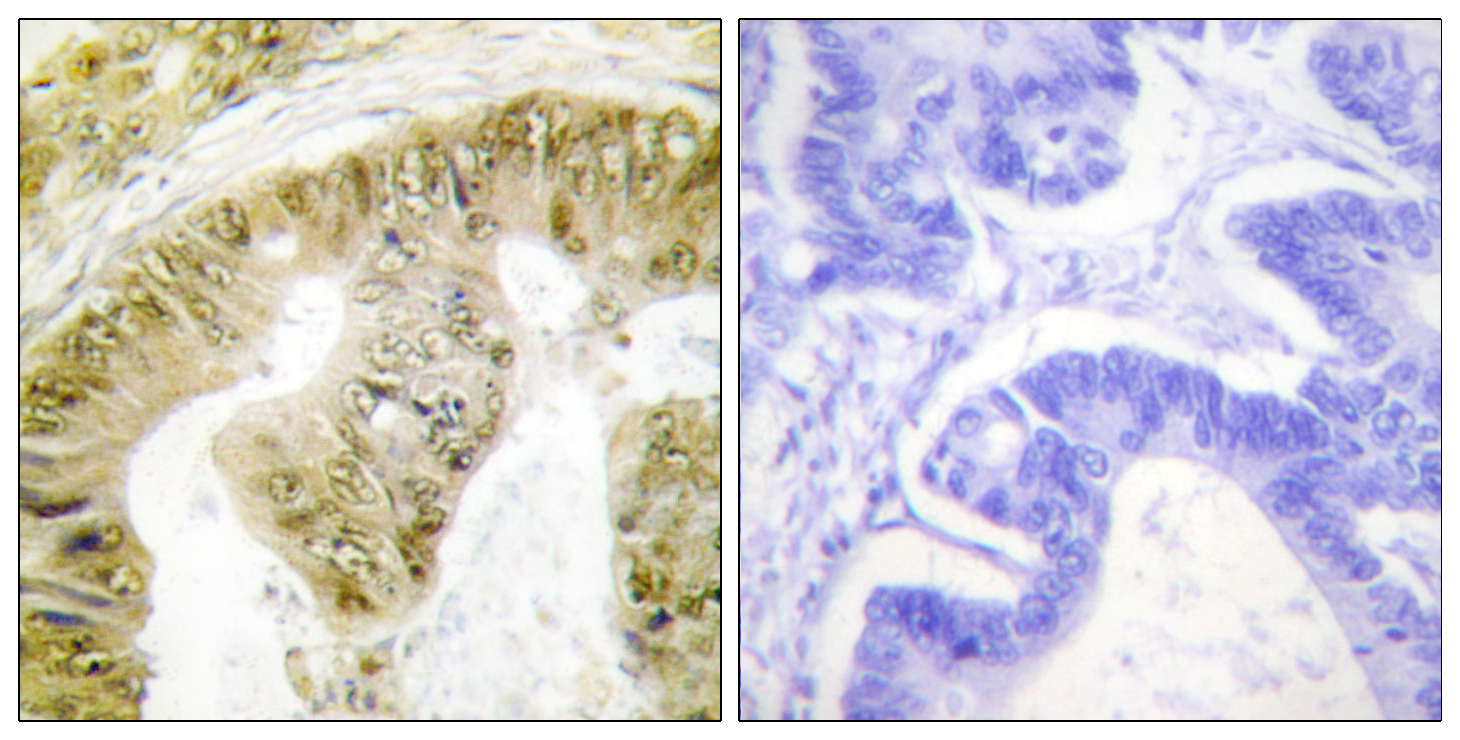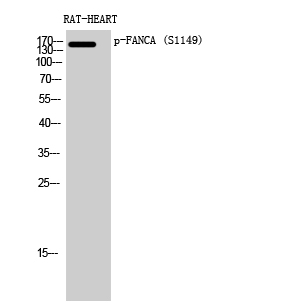产品名称
FANCA (phospho Ser1149) Rabbit Polyclonal Antibody
别名
FANCA; FAA; FACA; FANCH; Fanconi anemia group A protein; Protein FACA
蛋白名称
Fanconi anemia group A protein
存储缓冲液
Liquid in PBS containing 50% glycerol, 0.5% BSA and 0.02% New type preservative N.
Human Gene Link
http://www.ncbi.nlm.nih.gov/sites/entrez?db=gene&term=2175
Human Swissprot No.
O15360
Human Swissprot Link
http://www.uniprot.org/uniprotkb/O15360/entry
Mouse Swissprot No.
Q9JL70
Mouse Swissprot Link
http://www.uniprot.org/uniprot/Q9JL70
免疫原
The antiserum was produced against synthesized peptide derived from human FANCA around the phosphorylation site of Ser1149. AA range:1121-1170
特异性
Phospho-FANCA (S1149) Polyclonal Antibody detects endogenous levels of FANCA protein only when phosphorylated at S1149.
稀释度
WB 1:500 - 1:2000. IHC 1:100 - 1:300. IF 1:200 - 1:1000. ELISA: 1:5000. Not yet tested in other applications.
宿主
Polyclonal, Rabbit,IgG
背景介绍
The Fanconi anemia complementation group (FANC) currently includes FANCA, FANCB, FANCC, FANCD1 (also called BRCA2), FANCD2, FANCE, FANCF, FANCG, FANCI, FANCJ (also called BRIP1), FANCL, FANCM and FANCN (also called PALB2). The previously defined group FANCH is the same as FANCA. Fanconi anemia is a genetically heterogeneous recessive disorder characterized by cytogenetic instability, hypersensitivity to DNA crosslinking agents, increased chromosomal breakage, and defective DNA repair. The members of the Fanconi anemia complementation group do not share sequence similarity; they are related by their assembly into a common nuclear protein complex. This gene encodes the protein for complementation group A. Alternative splicing results in multiple transcript variants encoding different isoforms. Mutations in this gene are the most common cause of Fanconi anemia. [provided by RefSeq, Jul
组织表达
Cervix,Epithelium,Lymphoblast,Ovary,PCR rescued clones,
细胞定位
Nucleus. Cytoplasm. The major form is nuclear. The minor form is cytoplasmic.
功能
disease:Defects in FANCA are a cause of Fanconi anemia (FA) [MIM:227650]. FA is a genetically heterogeneous, autosomal recessive disorder characterized by progressive pancytopenia, a diverse assortment of congenital malformations, and a predisposition to the development of malignancies. At the cellular level it is associated with hypersensitivity to DNA-damaging agents, chromosomal instability (increased chromosome breakage), and defective DNA repair.,function:DNA repair protein that may operate in a postreplication repair or a cell cycle checkpoint function. May be involved in interstrand DNA cross-link repair and in the maintenance of normal chromosome stability.,PTM:Phosphorylated upon DNA damage, probably by ATM or ATR. Phosphorylation is required for the formation of the nuclear complex. Not phosphorylated in cells derived from groups A, B, C, E, F, G, and H.,subcellular location:The major form is nuclear. The minor form is cytoplasmic.,subunit:Belongs to the multisubunit FA complex composed of FANCA, FANCB, FANCC, FANCE, FANCF, FANCG, FANCL/PHF9 and FANCM. The complex is not found in FA patients.,
纯化
The antibody was affinity-purified from rabbit antiserum by affinity-chromatography using epitope-specific immunogen.





